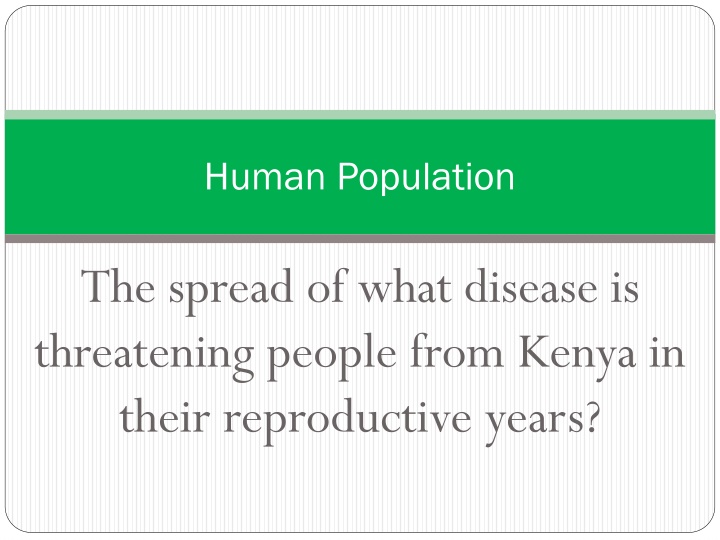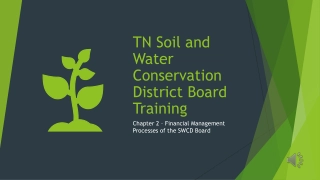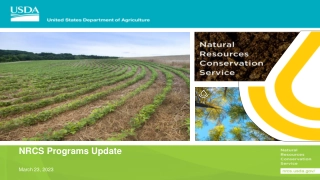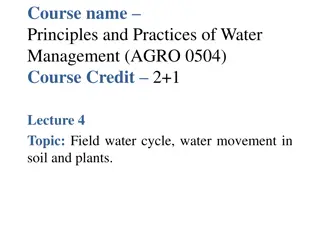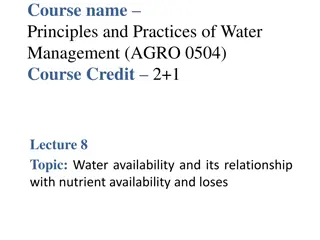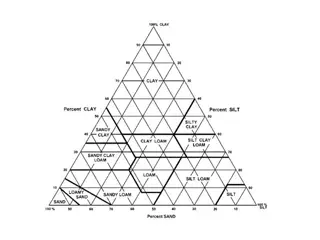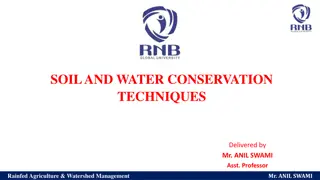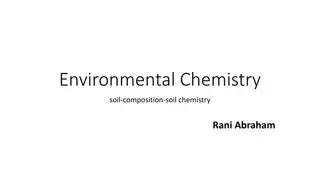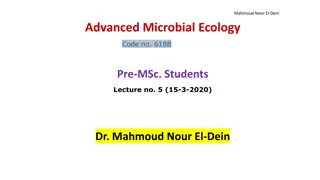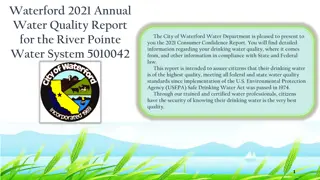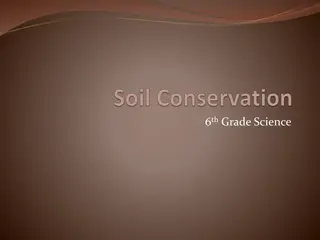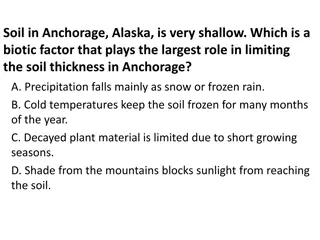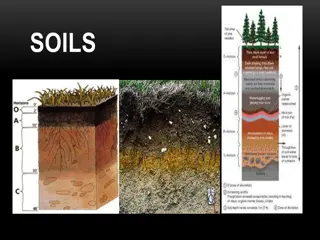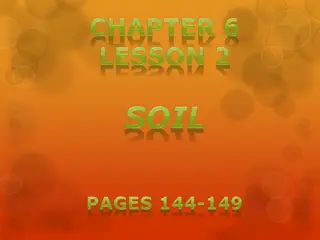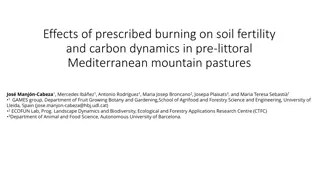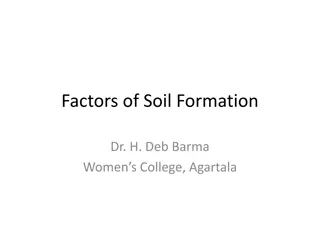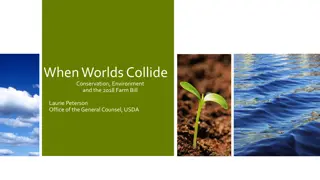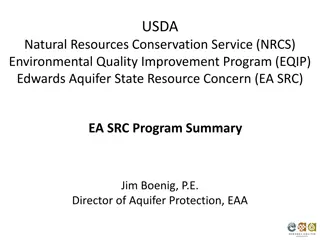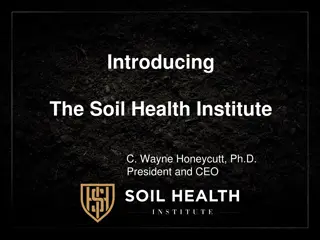Texas State Soil and Water Conservation Board: Water Quality Management Programs
Texas State Soil and Water Conservation Board (TSSWCB) is the lead agency in Texas responsible for planning, implementing, and managing programs to abate agricultural and silvicultural nonpoint source water pollution. They provide technical and financial assistance to local soil and water conservation districts to promote conservation practices, positively impacting state water resources and supporting the Texas agricultural economy. TSSWCB administers various programs such as the Water Quality Management Plan Program, Nonpoint Source Grant Program, Water Supply Enhancement Program, and Flood Control Program to achieve conservation goals. The Water Quality Management Plans developed through the TSSWCB offer site-specific land improvement measures for agricultural lands, enabling farmers and ranchers to prevent pollution and maintain water quality standards utilizing best management practices and technologies.
Download Presentation

Please find below an Image/Link to download the presentation.
The content on the website is provided AS IS for your information and personal use only. It may not be sold, licensed, or shared on other websites without obtaining consent from the author.If you encounter any issues during the download, it is possible that the publisher has removed the file from their server.
You are allowed to download the files provided on this website for personal or commercial use, subject to the condition that they are used lawfully. All files are the property of their respective owners.
The content on the website is provided AS IS for your information and personal use only. It may not be sold, licensed, or shared on other websites without obtaining consent from the author.
E N D
Presentation Transcript
Human Population The spread of what disease is threatening people from Kenya in their reproductive years?
Questions 1. Is the disease density dependent or density independent? 2. How differently would the disease spread in a developing country as opposed to a developed country?
Learning Goals and Activities Compare and contrast gender roles and family planning strategies in developed and developing countries. Describe how countries transition as their population changes List the negative impacts of population growth on the plant Disease Spread activity Video Powerpoint Go over homework
Womens Role There is a strong connection between the level of education and financial independence women have and fertility rates Developed Developed More education reproductive health and vocational knowledge More women at work out of the home Children not needed to support the family Children not needed to care for aging family Average fertility is lower Developing Developing Less Education Less women working out of the home Children work (farming, gathering, family business)- so more children is helpful Elderly rely on their children for care and support Average Fertility is higher
Population Campaigns Developing Developing Fertility rates HIGH Access to food, water, medical care, education DIFFICULT Strategy- REDUCE FERTILITY RATE (less babies/woman) India, Kenya, 1970s China Developed Developed Fertility Rates LOW (< 2) Growing elderly population w/ no one to care for them Less humans to take over key positions in society- gov t, medicine, education Strategy- RAISE FERTILITY RATES (more babies/woman) Japan, most of Europe
Demographic Transition https://www.youtube.com/ watch?v=6P2bsPWCRvM
The Demographic Transition Demographic Transition- a model based on observations and histories of developed countries that describe how population trends occur Takes about 1-3 generations for the demographic transition to occur in most developed countries
The Demographic Transition Stage 1 (preindustrial): high birth and death rate; stable population size US until about 1700 Stage 2 (transitional): death rates decline as hygiene, nutrition, and education improve; high birth rates; fast population growth Population could double in less than 30 yrs
The Demographic Transition Stage 3 (industrial): birth rate decreases; birth and death rates become closer to the same level and population starts to stabilize Stage 4 (post-industrial): birth rate goes below replacement level and population decreases
The demographic transition is a(n): a. Untested hypothesis b. Natural law c. Model based on observed patterns d. International law A country in the second stage of the demographic transition may have all of the follow except: a. Increasing agricultural production b. Improving healthcare and education c. Decreasing population size d. Decreasing death rates
According to the theory of demographic transition, population in Stage 1 tend to: a. Increase b. Decrease c. Remain the same d. Be large Countries that have entered the third stage of demographic transition are most probably characterized by: a. Weak or developing countries b. Death rates that far exceed birth rates c. Societal conditions that favor smaller families d. Populations with a high proportion of young people
Resource depletion ex. Shortage of fuel wood Access to resources Habitat destruction/fragmentation Strains on Infrastructure Increased Pollution Biodiversity Loss Public health issues Contagious Disease Shortage of Energy resources Acceleration of climate change 10. Lack of space for housing 11. Lack of arable (farmable) land 12. Lack of forest lands 13. Access to clean water 14. Political Conflict 1. 2. 3. 4. 5. 6. 7. 8. 9.
Resource Depletion Poor countries rely on wood for fuel for fires to boil water and cook food. The water supply becomes contaminated with diseases such as dysentery, typhoid, and cholera
Access to Resources Growing gap between wealthy and poor Who decides who gets access? What happens to people without access to resources? DEVELOPED DEVELOPING Population ~1.1 billion ~6.1 billion % Global Energy Consumption 87 13
Infrastructure High rates of population growth can overwhelming the infrastructure of a community Infrastructure the basic facilities and services that support a community Examples:
Impacts on Land Growing populations have a shortage of arable land Arable Land- land that can be used to grow crops
Problems of Rapid Growth: Impacts on Land Example: Egypt Because it is mostly desert, crops must be grown in the Nile River valley Also where jobs are located, so people want to live there As farmland is cleared for homes, the land that can be used for crops shrinks
Impacts on Land Urbanization- more people live in cities than in rural areas Housing in cities becomes more dense and more costly
Impacts on Land Suburban Sprawl People often find work in cities but move into suburban areas around cities Leads to traffic jams, inadequate infrastructure, and reduction of land for farming and wildlife
